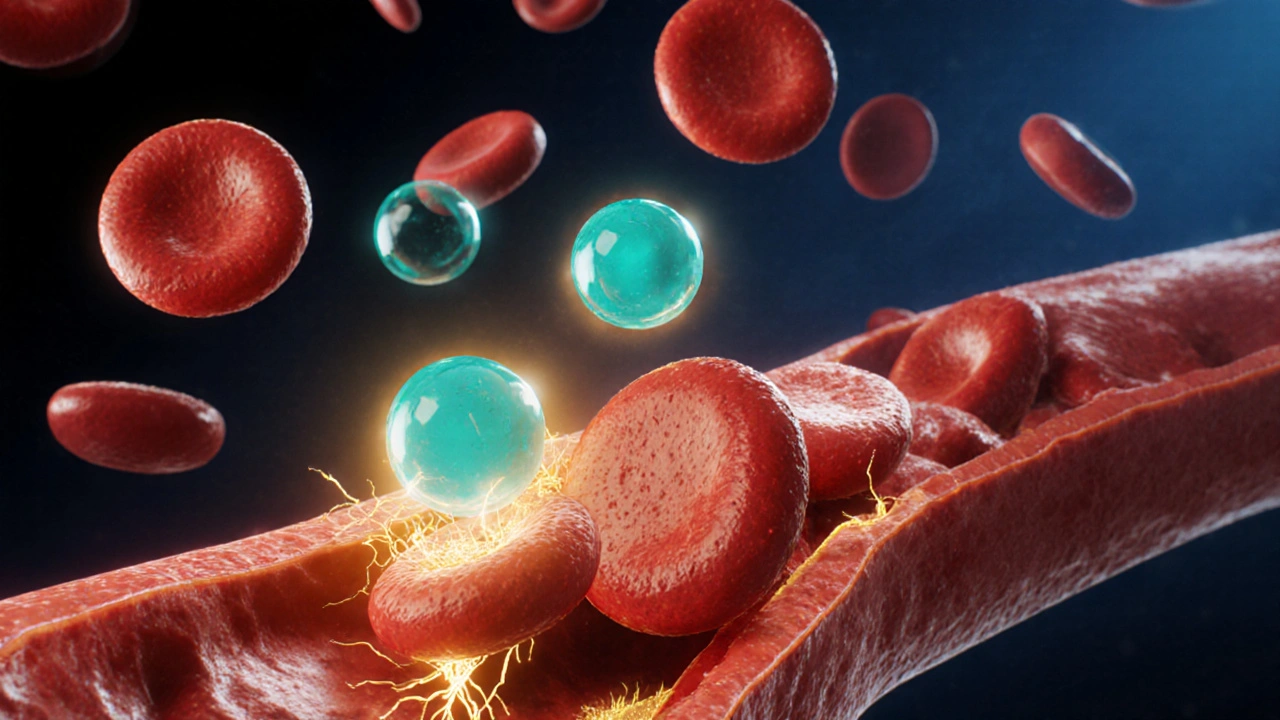Ticagrelor: What Men Need to Know About This Antiplatelet Drug
When working with Ticagrelor, a reversible P2Y12 platelet inhibitor prescribed for heart‑related events. Also known as Brilinta, it blocks platelet activation and reduces clot formation after a heart attack or during a stent procedure. ticagrelor is part of a broader Antiplatelet therapy, which includes drugs that stop platelets from sticking together and causing blockages.
How Ticagrelor Connects to Heart Conditions
Acute coronary syndrome, a range of urgent heart problems like heart attacks and unstable angina often triggers doctors to prescribe a combination of aspirin and a P2Y12 inhibitor. Ticagrelor’s rapid onset and predictable effect make it a go‑to option for many patients. The drug’s ability to provide consistent platelet inhibition (Ticagrelor provides platelet inhibition) means fewer surprises in emergency settings. Compared with older agents, it doesn’t require metabolic activation, which speeds up its action and simplifies dosing.
Another common player is Clopidogrel, a thienopyridine that also blocks the P2Y12 receptor but needs liver enzymes to become active. While both drugs aim to lower the risk of repeat heart attacks, Ticagrelor generally shows stronger platelet inhibition (Clopidogrel is an alternative to Ticagrelor). Choosing between them depends on genetics, bleeding risk, and how quickly a doctor wants the drug to work.
Bleeding risk is the biggest trade‑off. Because Ticagrelor blocks platelets more aggressively, patients may see higher rates of minor bruising or nosebleeds. However, studies show that serious bleeding events remain comparable to those on clopidogrel when used according to guidelines. For men with a history of gastrointestinal ulcers, doctors often pair Ticagrelor with a proton‑pump inhibitor to protect the stomach lining.
Dosage is straightforward: most adults start with a 180 mg loading dose, followed by 90 mg twice daily. The twice‑daily schedule helps keep drug levels stable and reduces the chance of “off‑periods” where platelets could rebound. Adjustments are rarely needed, but kidney or liver impairment may call for closer monitoring.
Real‑world use also involves drug interactions. Certain antifungal agents (like ketoconazole) and strong CYP3A inhibitors can raise Ticagrelor levels, increasing bleed risk. On the flip side, strong CYP3A inducers (like rifampin) can lower its effectiveness, potentially leaving a patient under‑protected. Always inform your pharmacist about any new prescription or over‑the‑counter meds.
When you look at the bigger picture, Ticagrelor sits inside a toolkit that includes aspirin, clopidogrel, prasugrel, and newer agents. Each tool has its own strengths, and a cardiologist tailors the mix based on age, weight, kidney function, and how soon the patient needs protection after a stent. Understanding how these pieces fit together helps you ask the right questions at the doctor’s office.
Below you’ll find a curated set of articles that break down buying tips, safety checks, and detailed comparisons for a range of medications men commonly encounter. Whether you’re hunting for the best online pharmacy for a heart drug or need a side‑by‑side look at alternatives, the posts ahead give practical, up‑to‑date guidance you can act on right now.
A detailed comparison of dipyridamole with aspirin, clopidogrel, ticagrelor and other antiplatelet options, covering mechanisms, side effects, costs, and when each drug is best used.

